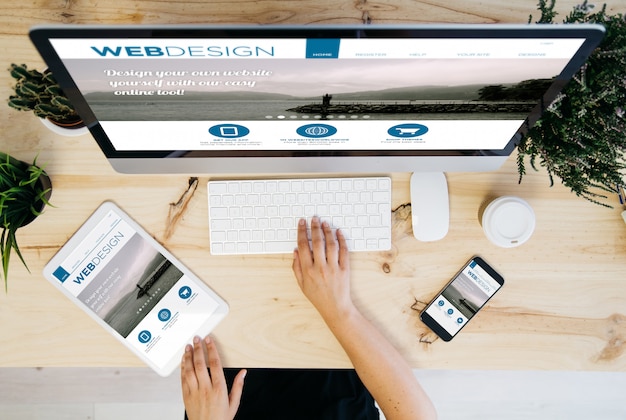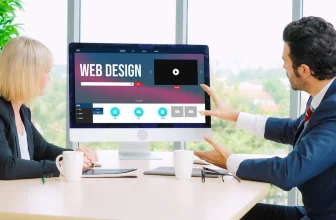
Within the expansive digital realm of the internet, crafting sites that feel inviting and usable for all isn’t just commendable—it’s essential. Web accessibility revolves around ensuring that those with disabilities can effectively navigate, comprehend, and interact with your online presence. It’s centered on eliminating obstacles and offering equal access to content and services. This piece will delve into the significance of web accessibility, its advantages, and hands-on methods for constructing websites that accommodate everyone.
Why Web Accessibility Matters
Consider the experience of entering a shop in a wheelchair only to discover there’s no accessible entryway. This frustration mirrors how individuals with disabilities perceive inaccessible websites—like being barred from a space they should seamlessly integrate with. The digital domain, akin to our tangible world, ought to be universally accessible. Whether it’s a retail online store or dental website design, accessibility must be a priority.
Here’s why web accessibility is crucial:
Equal Access: Accessibility ensures that everyone, regardless of their abilities, can use your website. Just as ramps help wheelchair users enter buildings, proper web design helps people with visual, auditory, cognitive, and motor impairments interact seamlessly.
Legal and Ethical: Many countries have laws requiring websites to be accessible. This isn’t just about compliance; it’s about respecting the rights of individuals with disabilities.
Business Impact: An inclusive website expands your potential audience, increasing your reach and potentially attracting loyal customers.
SEO Boost: Web accessibility practices often align with good SEO practices, enhancing your site’s visibility on search engines.
Benefits Of An Accessible Website

An accessible website benefits not only users with disabilities but also your business and all users. Here’s how:
- Improved User Experience (UX): When you design for accessibility, you enhance the overall user experience. For example, larger text and clear navigation benefit users of all ages.
- Faster Loading Times: Accessible websites usually have cleaner code and optimized assets, leading to faster loading times.
- Mobile Friendliness: An accessible website tends to be more mobile-friendly, adapting better to various screen sizes and orientations.
- Enhanced Content: Accessibility often encourages concise and organized content, making it easier for everyone to understand.
Key Principles Of Web Accessibility
Designing inclusively involves following certain key principles:
Perceivable: Ensure all information and user interface components are presentable to users in ways they can perceive. This includes providing alternatives for non-text content like images and videos.
Operable: Ensure that all functionality is operable through a keyboard interface or other accessible means. Users should be able to navigate, interact, and complete tasks without limitations.
Understandable: Information and operation of the user interface must be understandable. Use clear language, consistent navigation, and straightforward forms.
Robust: Content must be robust enough that it can be reliably interpreted by a wide variety of user agents, including assistive technologies.
Practical Steps For Designing An Accessible Website
Choose an Accessible Content Management System (CMS): Start with an accessible foundation. Many popular CMS platforms offer accessibility features or plugins.
- Opt for Responsive Design: Create a design that adapts to various screen sizes and orientations. This benefits all users, not just those with disabilities.
- Provide Alternative Text for Images: Screen readers can’t interpret images, so provide descriptive alternative text. But remember, alt text isn’t just for accessibility – it’s for SEO too.
- Use Semantic HTML: Properly structured HTML is essential for accessibility. Use headings to organize content hierarchically, and use lists for related information.
- Implement Clear Navigation: A well-organized navigation menu helps users find content quickly. Use descriptive labels for menu items.
- Ensure Keyboard Accessibility: Many users rely on keyboard navigation. Test that all interactive elements can be accessed and used with a keyboard alone.
- Use Color with Care: Avoid relying solely on color to convey information. Use high contrast between text and background to aid readability.
- Provide Captions and Transcripts: For multimedia content like videos and podcasts, provide captions and transcripts. This benefits not only deaf users but also those in noisy environments.
- Test with Real Users: Engage people with disabilities to test your website. Their feedback is invaluable for identifying potential issues.
- Regular Audits and Updates: Accessibility isn’t a one-time task. Regularly audit and update your website to ensure ongoing compliance.
Conclusion
Web accessibility is a journey toward inclusivity, breaking down digital barriers, and providing equal access for all users. By embracing the principles of permeability, operability, understandability, and robustness, you create websites that are not only compliant with regulations but also offer an exceptional user experience. Remember, an accessible website doesn’t just benefit people with disabilities; it benefits everyone and contributes to a more inclusive digital landscape. So, whether you’re designing a personal blog or a corporate website, make sure accessibility is at the forefront of your design philosophy.
Read Also:






